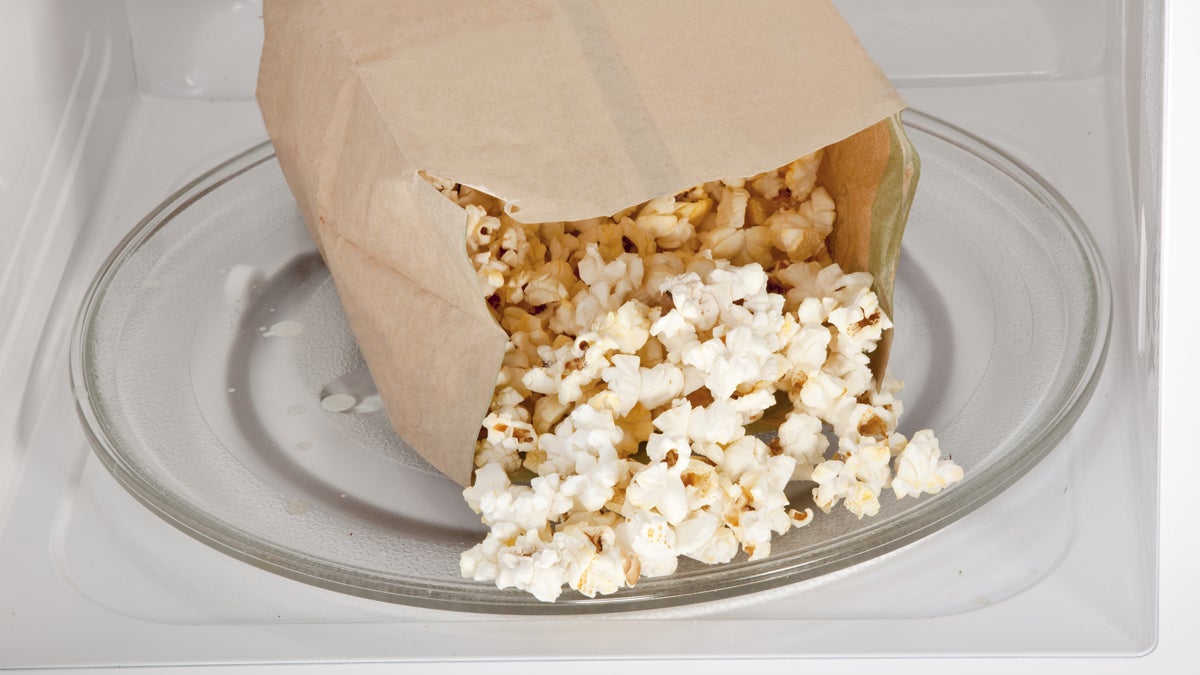‘Regrettable substitutions’ fail to knock hazardous chemicals out of products
Listen
When manufacturers of microwave popcorn got pushback from consumers for using the chemical dactyl in their products
Think about it: If you take the “A” out of BPA…what do you replace it with? Turns out, the solution is often another problem waiting to happen.
If you walk into the supermarket and pick up some microwave popcorn boxes these days, you’ll probably see the words “diacetyl free” written near the ingredients. But this wasn’t always the case.
Diacetyl is a chemical historically used to make the butter flavor added into movie theater popcorn, microwave popcorn, baked goods and just about anything that promises a buttery taste. But there was a problem with diacetyl—workers handling the chemical started developing serious respiratory problems.
Ricardo Corona was working in a flavor factory for about five months back in 2006, when he started having trouble breathing.
“When I first went to the doctor, I was told I had asthma. They gave me some inhaler. After awhile, I had a hard time breathing. The asthma medication wasn’t working,” Corona testified at a California Senate Judiciary Committee meeting in April 2013.
He is one of at least dozens of workers who developed a disease called bronchiolitis obliterans after inhaling diacetyl. He lost 80 percent of his lung capacity and ended up needing a transplant.
“The vapors and dust were so intense that they went through the paper mask I was given,” he recalled.
Although diacetyl exposure was primarily hazardous for workers who continually inhaled it, in one extreme case a man who consumed microwave popcorn about twice a day for 10 years developed the same disease.
In reaction, some big food companies vowed to stop using it, and they did. But some replaced it with a chemical called 2,3 pentanedione, which could be just as hazardous, according to a report released earlier this month by The National Institute For Occupational Safety and Health. Swapping one hazardous chemical in for another is what experts call a regrettable substitution.
“We’ve discovered recently that a lot of these substitutions that have been made, while functionally equivalent, also have hazards associated with them,” says Julie Zimmerman, assistant professor of chemical and environmental engineering at Yale University.
Scientists at the National Institute for Occupational Safety and Health exposed rats to 2,3 pentanedione and observed similar breathing problems. Some experts say it’s not surprising, since these chemicals—diacetyl and 2,3 pentanedione—are like cousins, both in the alpha-diketone family.
Laura Vandenberg, an assistant professor of environmental health sciences at the University of Massachusetts School of Public Health, specializes in hazard assessment and has written about another regrettable substitution—BPA.
“You could shop anywhere now and see plastics that are labelled BPA-free which, of course, should lead people to ask the next question which is: ‘What is in there instead, if it’s BPA free?'”
Bad news on that front as well, Vandenberg says, BPS is a chemical very similar in structure to BPA.
So why do regrettable substitutions happen in the first place?
“I would really hate to think that companies are purposefully putting a poison in place of another poison,” Vandenberg says. “Chemists have families, they have children, they want good things for their communities. They’re not purposefully making these decisions but they’re making decisions based on chemistry instead of on biology and endocrinology and toxicology.”
David Constable, head of the Green Chemistry Institute at the American Chemical Society, says people wrongly assume that there are safe alternatives just waiting around to be used.
“The science is not there yet, and that’s where we need to do more work to understand and to better design molecules and products so that we can avoid these problems. There’s a long road to go,” Constable says.
Green chemists who seek sustainable solutions to these issues have been pushing for more research to be done before making substitutions.
“The number of alternative assessments that have actually been done are very small, because of the difficulty in the science, but also in the difficulty in the politics that attend it,” Constable says.
As for 2,3 pentanedione and its use in butter flavor, The National Institute for Occupational Safety and Health will release exposure limits by the end of the year—limits that will hopefully prevent workers like Ricardo Corona from getting sick in the future.
WHYY is your source for fact-based, in-depth journalism and information. As a nonprofit organization, we rely on financial support from readers like you. Please give today.



